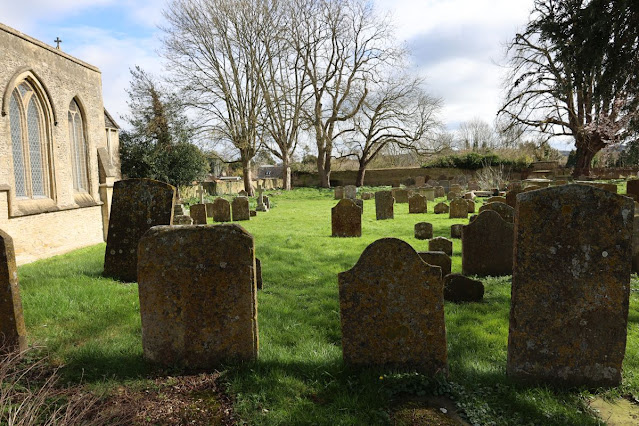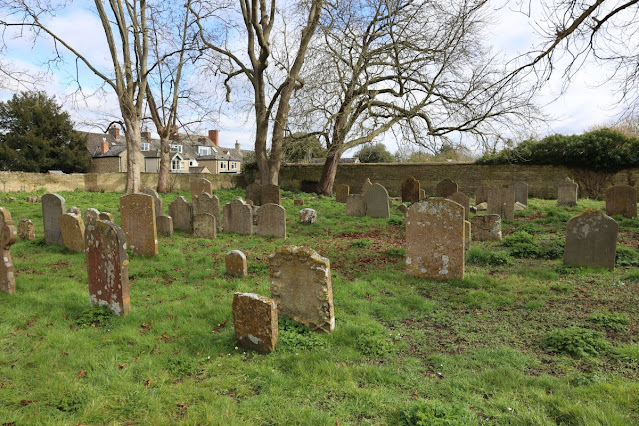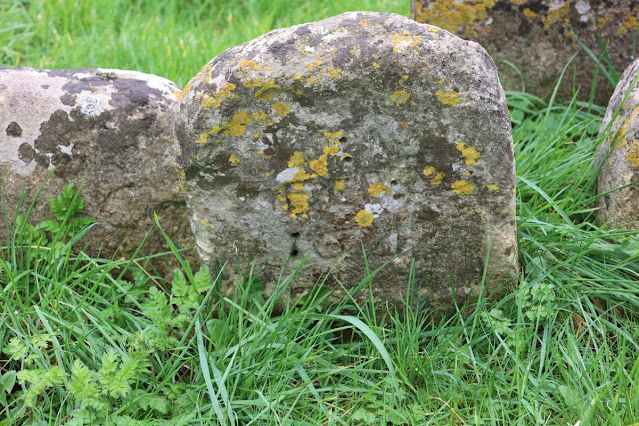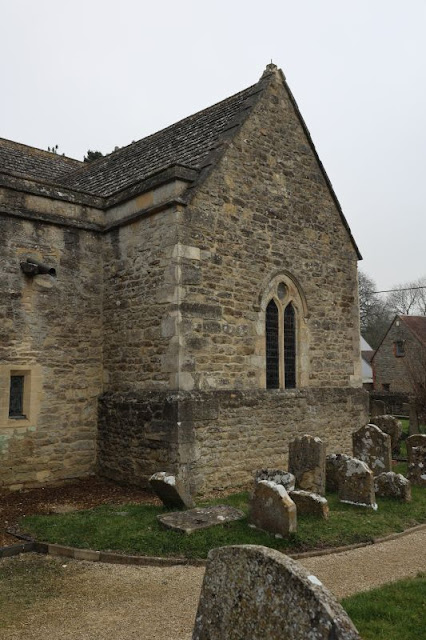As I happened to be near this place on Wednesday I thought I might as well stop off and get a few photos of the church not really caring if it was against our lockdown rules at the end of the day I was exercising by walking around the church. St Giles was not on my list though I had been looking at a few in the vicinity to visit. There is quite a bit of history to the church and after seeing the photos taken inside the church it will be high on my revisit list Wikipedia history below :-
"The Church of England parish church of Saint Giles seems to have been built late in the 12th century. The Early English Gothic south aisle, including the south door and three and a half bay south arcade date from this period. From this time the east wall of the chancel had a trio of three stepped lancet windows. The early Decorated Gothic south transept was added late in the 13th or early in the 14th century as a chantry chapel. The south porch was added late in the 14th century.
Around 1400 the present west tower and tower arch were built. The
tower arch features two unusual almost life-size sculptures of human
figures: one playing the bagpipes and the other showing an expression of
amazement. Also in the 15th century the pitch of the nave roof was greatly reduced in typical Perpendicular Gothic style. Late in the 15th century, Perpendicular Gothic windows were inserted in both sides of the chancel and the north wall of the nave. The Perpendicular Gothic piscinae in the chancel and south transept are also 15th century.
In the 18th century Magdalen College, Oxford and the Earl of Abingdon contributed to the building of a west gallery
in the nave. By 1840 the east wall of the chancel was out of alignment
so the chancel was demolished and rebuilt to designs by the architect HJ Underwood, who retained the Perpendicular Gothic side windows with their mediaeval stained glass
but dispensed with the mediaeval roof and replaced the Early English
east windows with a neo-Perpendicular one. A contemporary condemned this
work as "wanton destruction".
By 1849 the nave was dilapidated so in 1852 the clerestory
and west gallery were removed, the north wall was rebuilt and the north
transept was added. Once again Underwood was the architect. The work
cost £800, of which Baker Morrell of the local Morrell brewing family and Magdalen College each paid £200. The church is a Grade II* listed building.
By 1554 St. Giles' had three bells and by the 18th century it had five. It now has a ring of six bells plus a Sanctus bell. Of the current ring, the oldest is the fourth bell, which Joseph Carter of Reading, Berkshire cast in 1602. William Yare, also of Reading, cast the tenor bell in 1611. Abraham Rudhall of Gloucester cast the second and third bells in 1718. W&J Taylor of Loughborough, who from 1821 to 1854 had a bell-foundry in Oxford, cast the fifth bell in 1838. Mears and Stainbank of the Whitechapel Bell Foundry cast the treble bell in 1866. James Wells of Aldbourne, Wiltshire cast the Sanctus bell in 1811.
St Giles' has a disused turret clock without a dial, the frame of which appears to be late 17th century.
St Giles' has an Elizabethan silver chalice made in about 1569, a carved late Jacobean pulpit, and a number of monumental plaques.
One of these, to James Salisbury of Bullingdon Green (who died in
1770), is elaborately decorated. Another is to the five children of
Thomas and Esther Herbert, who died from a recurrence of the bubonic plague between 1686 and 1688. Esther, whose family founded New College, also died in 1688 aged 33. A ceramic statuette of Saint Giles made by a local potter in 1988 is in the south chapel.
In 1451 the Crown
granted the advowson to the Hospital of St John the Baptist outside the
East Gate, Oxford. In 1456 the hospital was suppressed, and all its
property granted to Magdalen College, Oxford, newly founded by William Waynflete.
From then until 1950 the vicar of St Giles was always a member of the
college. George Wilkynson, who was incumbent from 1483, was Dean of
Divinity of the University of Oxford.
Many vicars of St Giles were distinguished fellows of the College, but some of the post-Reformation ones neglected the parish. Richard Byfield, who was incumbent from 1666, was a scholar of Hebrew. Baptist Levinz, who was incumbent 1680–82, became Bishop of Sodor and Man in 1685. George Horne, who was incumbent 1760–64, became Vice-Chancellor of the University of Oxford in 1776 and Bishop of Norwich in 1790. Edward Ellerton, who was incumbent from 1814, founded Horspath parish school and left land in the parish to fund scholarships to Magdalen College, Oxford. Frederick Bulley, who was incumbent 1843–49, became President of Magdalen College in 1855. Henry Bramley, who was incumbent 1861–69, was a hymnologist who worked with the composer Sir John Stainer."
St Giles church from over the wall near where I parked
Walk through the south gate the path takes you to the porch
Look west and the belltower dominates your view
To the east you will find a small transept
Walking around the tower you find a door in the base the stonework around it very eroded apart from some restored stone
On a nearby buttress I spotted this circle that looks suspiciously like it may have been a mass dial
Going further along the path will bring you a view of the north side and an larger transept
Walk along further towards the east and you will get look at the east end of the church
A little further and you can make out both transepts
Further around and you come to the path from the east
From the south path the churchyard shows some of the old graves
With a few more over on the other side
There are more around the north side
Follow the path further brings you to the more recent part of the churchyard
Some look old but I think just weather beaten
From a corner you get this view looking towards the south
Going back to the south passing the east end you pass more older graves
A priest door in the chancel is gated with a sturdy steel gate
In the corner of the transept and east end older headstones are packed in
A last look of the church before I get in the car and go home. The visit has make me put St Giles high on my list for a revisit when the importunity arises Till next time take care and have a wonderful weekend





































































